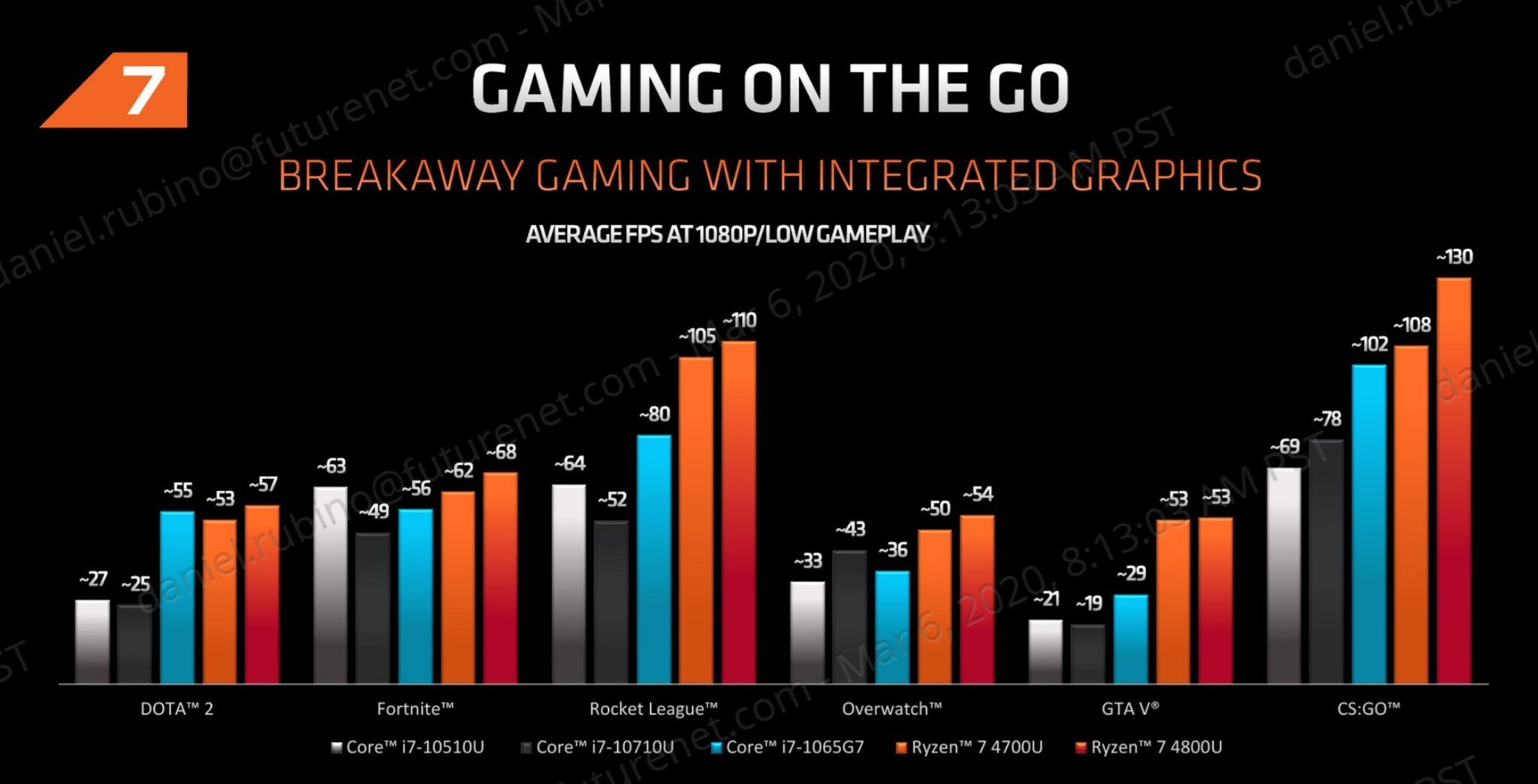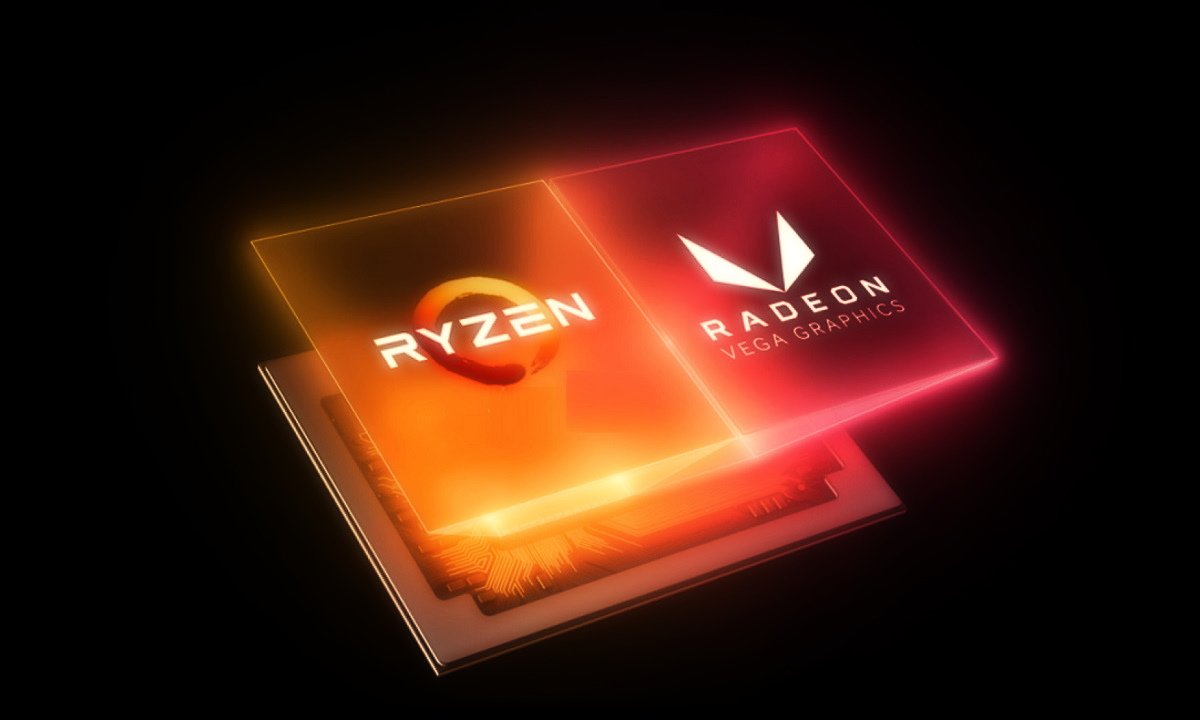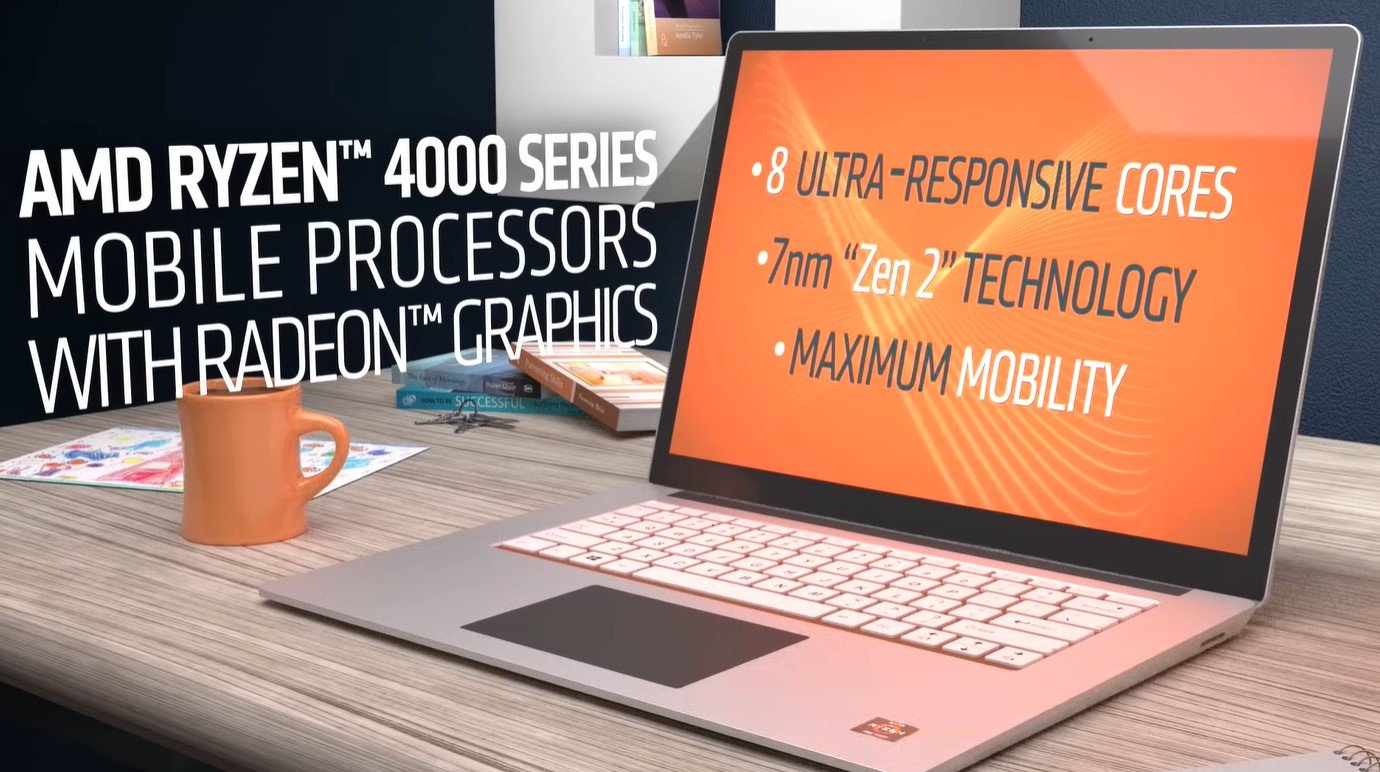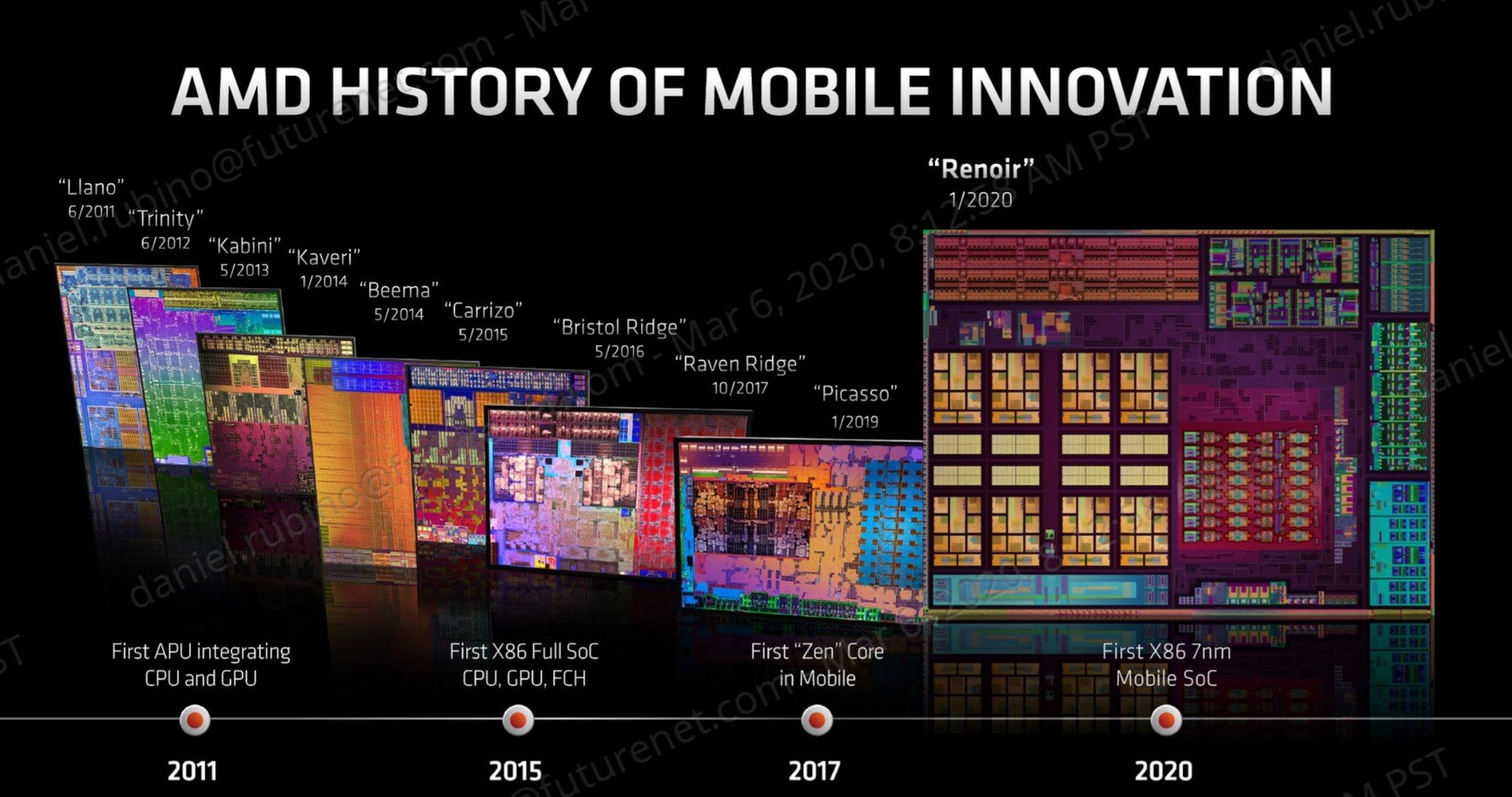AMD Ryzen Mobile 4000 U-series is ready to topple Intel's Ultrabook dominance
AMD is bringing the world's first 7nm x86 processor with 8-cores and 16-threads to market. Is it enough to beat Intel?

Intel has had quite the run in the Ultrabook market – a market they defined starting in 2011. But companies like Qualcomm and now AMD is gearing up to take on Intel's supremacy of ultra-thin laptops.
AMD recently brought some media down to one of its headquarters in Austin, Texas, where it gave deep dives on its forthcoming Ryzen Mobile 4000 U-series processors. These are the world's first 7nm x86 processors that bring an astounding 8-cores (16 threads) to the premium ultrathin laptop space. The strategy is a similar one that AMD has used against Intel on desktop: lower prices, and overwhelming processing.
Ultimately, whether AMD has truly beat Intel in performance and battery life won't be known until we get our hands on an actual review unit (that's coming soon), but AMD sure talks a big talk and has the receipts to back it up.
AMD Ryzen Mobile 4000 U-series
Before getting to the claims, let's break down what AMD is bringing to the market next month. The vocabulary and even divisions amongst its Ryzen Mobile chips ring of Intel influence (including that "U" and "H" designations). That's OK, though, as it makes comparisons that much easier for consumers.
AMD breaks its Mobile 4000 U-Series into three major categories that reflect Intel's i7, i5, and i3 ranges:
- Ryzen 7
- Ryzen 5
- Ryzen 3
Within each group is found one or more SKUs to reflect various price points and performance goals:
| Processor | Cores/Threads | Boost Base (GHz) | Cache | Graphics | TDP |
|---|---|---|---|---|---|
| Ryzen 7 4800U | 8/16 | 1.8 (up to 4.2) | 12MB | Radeon | 15W |
| Ryzen 7 4700U | 8/8 | 2.0 (up to 4.1) | 12MB | Radeon | 15W |
| Ryzen 5 4600U | 6/12 | 2.1 (up to 4.0) | 11MB | Radeon | 15W |
| Ryzen 5 4500U | 6/6 | 2.3 (up to 4.0) | 11MB | Radeon | 15W |
| Ryzen 3 4300U | 4/4 | 2.7 (up to 3.7) | 6MB | Radeon | 15W |
Right away, the most apparent difference between AMD and Intel is made clear. Besides the jump down to 7nm manufacturing process technology (versus Intel's 10- and 14nm), AMD has managed to double the core count over Intel.
All the latest news, reviews, and guides for Windows and Xbox diehards.
Here is how AMD's new flagship mobile U-processor compares against Intel's 10nm one regarding specs:
| Header Cell - Column 0 | AMD Ryzen 7 4800U | Intel i7-1065G7 |
|---|---|---|
| Cores/Threads | 8/16 | 4/8 |
| Boost Base (GHz) | 1.8 (up to 4.2) | 1.3 (up to 3.9) |
| Cache | 12MB | 8MB |
| Graphics | Radeon | Iris Plus |
| TDP | 15W | 15W |
Of course, Intel also has the 14nm "Comet Lake" i7-10710U, which has six cores/twelve threads with a CPU boost up to 4.7GHz, but you're knocked back down to Intel's UHD graphics.
AMD was happy to reveal that on many benchmark tests – including PCMark 10, 3DMark Time Spy, and Cinebench – both the Ryzen 7 4800U and 4700U were able to topple the Intel's Core i7 1065G7 with ease. The same was true for creator tests like video transcoding in HandBrake, audio encoding in LAME, and gaming.

While the difference in benchmarks for games varied from just a few frames per second (FPS) e.g., 68 FPS for Fortnite and AMD, versus 56 FPS, there were times where AMD blew Intel away e.g., Rocket League (110FPS vs. 80).
AMD's big message here was, why compromise? It's a valid point.
Currently, Intel has its 10nm Ice Lake line, which has fewer cores and threads, but it gets improved graphics with Intel's Iris Plus. Intel though, also has its 14nm Comet Lake processor, which improves on threads and cores, and it gets a much more significant CPU boost. Unfortunately, Intel only supplies the old UHD Graphics chip for that processor, meaning you must sacrifice on gaming and video performance.
AMD's Ryzen Mobile line doesn't force a choice. All the systems use AMD's Radeon graphics, which beats even Intel's latest Iris Plus system. Toss in more cores and threads at what is presumably a slightly lower price point, and AMD is back in the game.
Ryzen 5 and Ryzen 3 Mobile processors

Putting aside AMD's Ryzen 7, which will be featured in numerous upcoming laptops, the company is also pushing forward with Ryzen 5 ("fast responsiveness and powerful performance") and Ryzen 3 chip ("premium performance"). That translates roughly to mid-range and entry-level systems.
Applying the same comparison between AMD and Intel's latest, we can see where the former has a leg up again: cores and threads.
| Header Cell - Column 0 | AMD Ryzen 5 4600U | Intel i5-1035G7 |
|---|---|---|
| Cores/Threads | 6/12 | 4/8 |
| Boost Base (GHz) | 2.1 (up to 4.0) | 1.2 (up to 3.7) |
| Cache | 11MB | 6MB |
| Graphics | Radeon | Iris Plus |
| TDP | 15W | 15W |
AMD also has the Ryzen 5 4500U with fewer threads, but it too can best Intel's Core i5-1035G1 in single, multi-thread, and graphics performance. The same applies to productivity and games.
Finally, even in the entry-level tier, AMD beats out Intel. The previous steps down to dual-core for its Core i3-1005G1, while AMD is still cruising at four cores.
| Header Cell - Column 0 | AMD Ryzen 3 4300U | Intel i3-1005G1 |
|---|---|---|
| Cores/Threads | 4/4 | 2/4 |
| Boost Base (GHz) | 2.7 (up to 3.7) | 1.2 (up to 3.4) |
| Cache | 6MB | 4MB |
| Graphics | Radeon | UHD |
| TDP | 15W | 15W |
AMD Radeon 4000 Mobile looks legit

AMD also went into more depth about its U-series processor's capabilities. One big question for many is simply battery life. While Intel has been making significant inroads in this area, AMD has, so far, lagged. Some of that is because PC makers swap out Intel's chip for an AMD one without fully optimizing the rest of the hardware. AMD says we'll see less of that in 2020 as companies like Lenovo are now building pure AMD systems with their assistance.

Jumping to 7nm technology AMD claims it gets 2x the transistor density as before with 20 percent lower SOC power, while also delivering 2x performance per watt. Things like better idle and activity detection, improved power state selection, and a new power management system also go a long way.
In comparison to the Dell XPS 13 2-in-1, the forthcoming Lenovo Yoga Slim 7 with Ryzen 7 4800U does a solid job of beat Dell's Intel-based machine, or running neck and neck with it. (AMD's "blended" score shows the Lenovo getting 11.5 hours of usage, while Dell's is just 9.1 hours. The company also "normalized" for battery size difference and, even there, Dell gets 11.0 hours).
The new mobile series chips also support modern technology, which is crucial. For instance:
- 1-watt display panels
- LPDDR4x support
- Low power offload for audio and video
- 5x faster idle entry/exit latency
AMD is also promising better support going forward, including "user experience certification," which ensures rigorous testing before the laptop ships to stores. There's also "continuous validation," where AMD monitors laptop performance to resolve any issues after initial shipment quickly.
Despite trailing behind Intel in the mobile space, AMD has gained ground recently. The company claims that in 2018 there were around 75 AMD mobile systems on the market. In 2020, they expect that number to be closer to 170.
It's easy to suggest that AMD is doing a lot of chest-thumping here. But the same could have been said a few years ago as the company was unveiling the Ryzen Threadripper to the market. As it turns out, when AMD talks these days, it's not bluffing. See its recently announced Ryzen 9 4900H that takes on Intel's Core i9-9980HK.
Will we see a repeat in the mobile space of what has transpired on desktop systems with AMD taking back the throne? If not this generation of chips, then the next seems likely. AMD is on a tear these days, and it's hard not to get excited about their serious return to the mobile market.
I look forward to putting them to the test, and maybe that Surface Laptop 4 will be something special.

Daniel Rubino is the Editor-in-chief of Windows Central. He is also the head reviewer, podcast co-host, and analyst. He has been covering Microsoft since 2007 when this site was called WMExperts (and later Windows Phone Central). His interests include Windows, laptops, next-gen computing, and wearable tech. He has reviewed laptops for over 10 years and is particularly fond of 2-in-1 convertibles, Arm64 processors, new form factors, and thin-and-light PCs. Before all this tech stuff, he worked on a Ph.D. in linguistics, performed polysomnographs in NYC, and was a motion-picture operator for 17 years.

